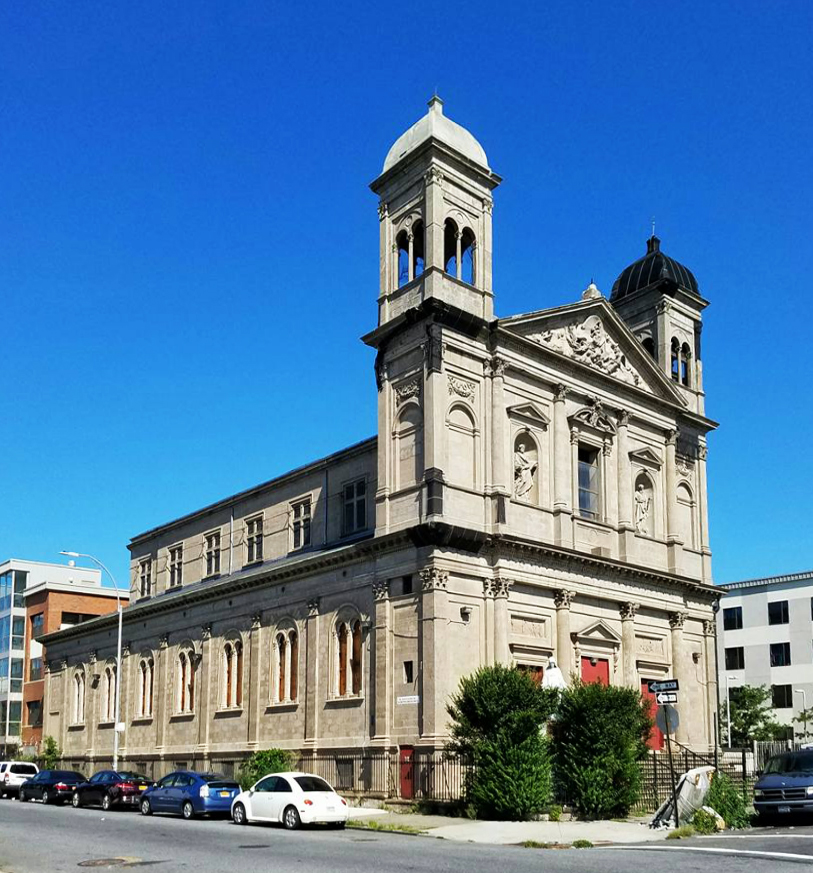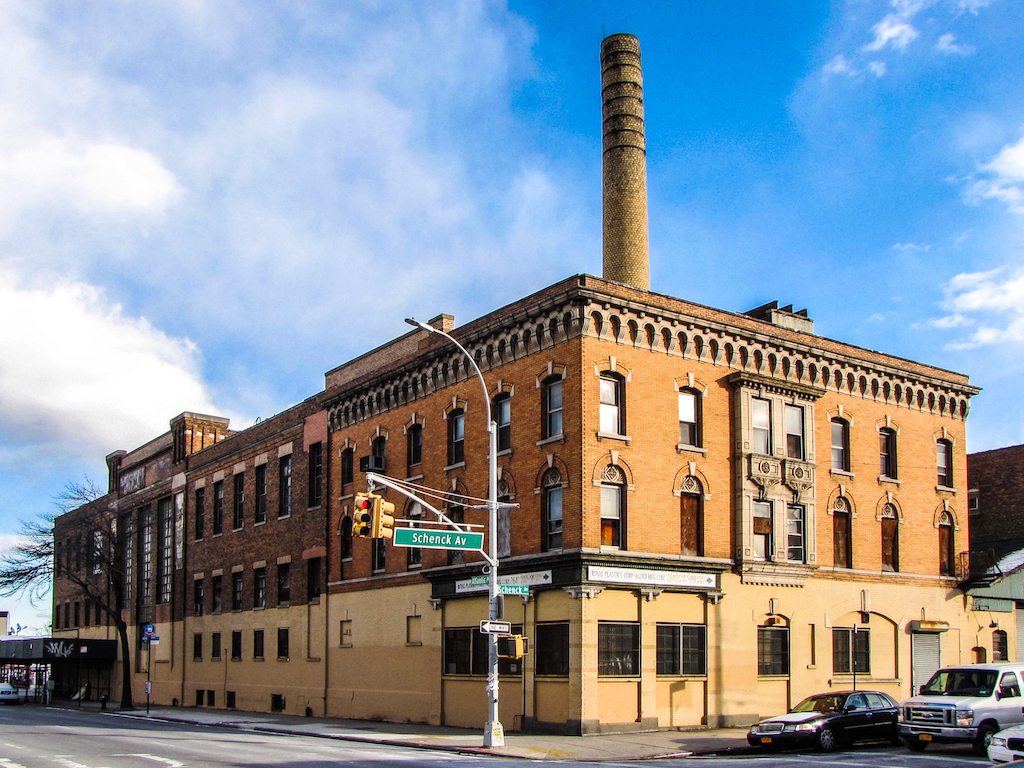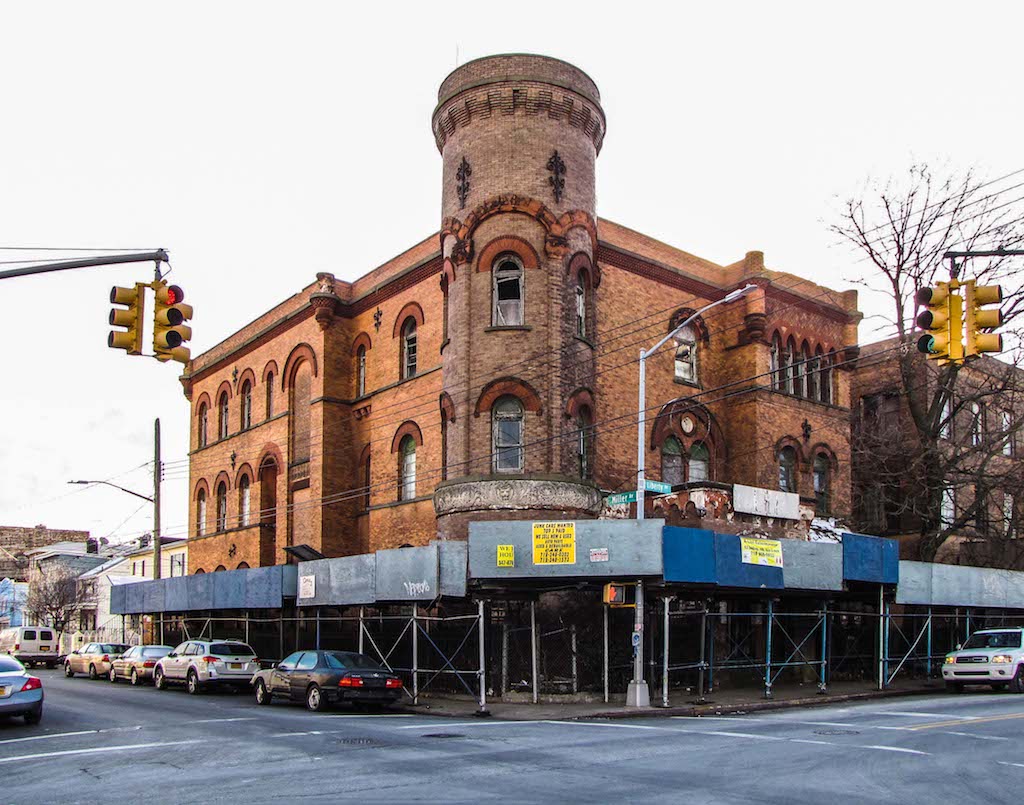People Movers
Community organizers give a window into the city they want and the work they’re doing to get there.
We are celebrating 15 years — and counting — of stories that are deeply researched and deeply felt, that build a historical record of what the city has been.
While many concerned with gentrification focus on what new businesses and people crop up in the neighborhoods they call home, Zulmilena Then goes to bat for the buildings themselves. East New York, the Brooklyn neighborhood where Zulmilena was raised, is the first of 15 neighborhoods that the city plans to re-zone in support of its Mandatory Inclusionary Housing program. It is also one of the poorest. The rezoning promises an influx of resources to a community long parched for investment, enabling the development of parks, commercial space, and new housing, both affordable and market rate. But at the time of the rezoning, many housing activists opposed the plan for the strain they expected abruptly rising commercial and residential rents would put on East New York’s current residents, and for the shortcomings they saw in the city’s affordable housing plan. Indeed, only one year later, media and real estate are already proclaiming “up and coming” East New York a “hot new neighborhood” — two phrases which rarely bode well for precarious, low-income renters — and speculators are reportedly running rampant.
Working in architecture, Zulmilena is also concerned with the vulnerability of the neighborhood’s neglected historic buildings and the culture they represent. Though she advocated for preservation measures to be included in East New York’s rezoning, the final plan lacked any landmarks program. So the six members of Preserving East New York (PENY) are taking on the challenge themselves, one church, bank, and factory at a time. For the second installment of People Movers, we sat down with Zulmilena to ask how and why she spends her nights and weekends drumming up community support for the preservation of architectural history. – O.S.
I see East New York as a homey place. Everything is very low scale, and as you walk around you feel the breeze and the sun, and you see the sky. I’ve always been in Brooklyn; I never had the desire to move to Manhattan because I felt like it wasn’t homey, it wasn’t a place where I could live.
I was raised here for most of my life up until college. Maybe being removed from the neighborhood let me see its beauty. By working in architecture in Bed-Stuy, I’ve come to understand the value of historic buildings because I’ve met the people that live in them and the local preservationists that fight to protect the neighborhood’s historical treasures. At work, I would research the buildings we were renovating, and when I looked at the landmarks map, I saw that preservation was concentrated in more affluent communities. I would wonder, why aren’t there more landmarked buildings in East New York? The neighborhood has more than 20,000 properties, but only three landmarks. The last building that got landmarked here was 36 years ago.
Right now, we’re working to save Our Lady of Loreto Church, located at 124 Sackman Street in Brownsville (previously East New York). The church has been an important figure in the neighborhood since its construction in 1908 until it closed in 2009. The Diocese of Brooklyn and Catholic Charities want to demolish the church in the name of affordable housing. Brownsville residents and organizations, PENY, organizations of Italian heritage, and old parishioners that live or used to live in East New York and Brownsville gathered together to form the Brownsville Cultural Coalition, so that we could help save the church and readapt it into an arts and culture center, which we feel is very much needed, instead of just building another housing project. That’s right.
There’s already so much public housing, affordable housing, shelters, and supportive housing in the neighborhood. There is a need for affordable housing, but it’s also unclear whether these developments will really be affordable for the people living here. And there needs to be a balance. There needs to be programming for the enrichment of the community; it shouldn’t be one thing over the other.
PENY thinks of the potential arts center as another Brooklyn Academy of Music for Brownsville and East New York. There is a need in the community for a place to go and learn and be enlightened by the architecture and its beauty. But the building is in jeopardy because there are actual demolition permits in place. One of the members of the coalition filed a lawsuit, and that has been holding up the demolition for now. Hopefully, Catholic Charities and the Diocese of Brooklyn will have a change of heart and see the value of this beautiful structure.
When you save a building, it’s not just about saving the history; so many things come with that. Like economic development: there are trades involved with the construction that could bring jobs to the local people. You’re also preserving those hands-on skills that are at risk of dying, like carpentry and ornamental metal working. The people that work these trades are normally hired locally, and when you hire locally, those people will spend within the community.
At the East New York farmer’s market yesterday, we were giving out info about Our Lady of Loreto — one fun fact is that the church appears in the background in many episodes of the Netflix series The Get Down. We’ve been pointing out the shots of the church to the community, and at the farmer’s market yesterday we got a few converts to sign a letter of support to save the building by landmarking it. When we’re talking to people and doing outreach, people get it and are very supportive. They can see how important the building is to creating a scene. We will send these letters out to the local Council Member, Rafael Espinal, whose district includes parts of East New York, Cypress Hills and part of Brownsville. We’ll also send them to the Landmarks Preservation Commission (LPC) to show them we’re not alone, we have people who support us saving this building.
Yesterday at the farmer’s market, we were talking and joking that this is our portable office building. This is where we do community outreach, this is where you can come and meet us, every first and third Saturday of the month from 9am to 3pm, if you have questions. Our work is all volunteer-based.
We’re planning to do workshops sometime in the fall of 2017. Landmarking and preservation are kind of a new concept within our neighborhood, so we want to bring the local community and its representatives and other organizations together, just to understand what preservation means and why it’s important, and remove the misconceptions that people have about landmarking. Especially after the rezoning, the neighborhood has received a lot of attention. So sometimes it feels that advocating for landmarking is going to add on to gentrification, but that’s not necessarily true.
Another misconception has to do with the cost of the process: in fact, anyone is free to nominate a building to become a landmark. The process requires paperwork and documentation, but there’s no cost. You don’t have to do any repairs to your building. The work involved, really, is just to gather support through signed petitions, by having the community involved in public hearings when the agency votes, having your council member on board, having the residents on board. And the research, and compiling the applications.
We also do walking tours, focusing on areas that are in jeopardy within the rezoning. We’ve been privileged to partner with the Historic Districts Council and the Municipal Art Society to provide the neighborhood tours. A lot of the people that participate in the walking tours are not from the community. It’s good to have people come out to East New York and walk around the neighborhood to see it from our perspective. Most people know East New York as being one of the worst neighborhoods in New York City, and a lot of the media is focused on that. So through our walking tours and through our community outreach we want to show people that there’s another side.
As far as pushing buildings through the process, we currently have one building up for designation as a landmark, the Empire State Dairy Company located at 2840 Atlantic Avenue, which has been added to LPC’s calendar list. When LPC is considering designating a building, they add it to the calendar, and then it goes through the process of designation through public hearings or public meetings. Right now we’re waiting for that building to hopefully be designated before the end of the year. If by mid-December it hasn’t been designated, then we’ll have to start the process again next year.
We want people to understand that we have been underrepresented for many decades and that we shouldn’t be afraid of protecting our community from disappearing. Neighborhoods are always going to change, and if we don’t try to preserve those parts of history that make the neighborhood special, then we’re not going to be connected to it any more. At least if these buildings are standing and everything else disappears, we’re connected to something.
In our community outreach, we explain the rezoning process because we feel that it has started to cause a transformation. There’s been a lot of real estate speculation. Real estate agencies that never marketed in this neighborhood are now coming in. The value of properties has risen because before you were looking at a three- or four-story building, but now you can tear it down and develop it with a building up to 14 stories high. Things are changing, and we have to explain that to them because it’s going to be drastic.
It’s very important that the people who have been living here for so long see the beauty and the value of their neighborhood. If we can save these buildings, then they are gifts to the people of the community for having been here for so long with so few services. It’s like a “thank you,” because they’re still here. That’s why I feel that landmarks are for our people.
I wanted to instill an appreciation for historical buildings in my community, but even though I worked in an architecture firm, I wasn’t sure what the process was for making something a landmark. And I was also scared, I didn’t think I was capable. But then in 2015, Mayor de Blasio started talking about the rezoning in East New York. At the same time, I learned that a building that was very important to me was going to be demolished. It was a prominent historic building, the East New York Savings Bank, at the corner of Pennsylvania and Atlantic; once you saw that building you understood that you were in East New York. Knowing that it might disappear gave me the courage to say, “We need to do something.” Because if the rezoning was going to happen, the story of this bank building being demolished would repeat and happen to other important buildings.
I wanted to help show that even though we do not have that many landmarks now, we care about what happens within our community. By bringing in preservation, we have power over what can happen. If that East New York Savings Bank had been landmarked, in order for the owner to demolish it or alter it, they would have to go to the community board and engage the community about what their plans were. Because that building wasn’t landmarked, they were free to do anything.
When I first started, I really didn’t know where to go or what to do. But I decided to start by myself and create a name for the group and see who would join me. When the neighborhood was going through the rezoning, I represented PENY at the public hearings, testifying that it was important to address preservation within the plan. Through those testimonies, I was able to connect with friends and people who attended the hearings, so that little by little they became part of the group. Right now we have five to six members.
We’re considering submitting four buildings for nomination next year. The Holy Trinity Russian Orthodox Church is a very beautiful building. Inside it’s very ornate, and its exterior is very distinctive. The church members are very proud of the church, and enthusiastic about preserving it. But we still have to reach out to the owners of the other three buildings: the original 75th Precinct Station House, the Second Cavalry Baptist Church, formerly known as the Agudath Achim B’nai Jacob of East New York, and Grace Baptist Church, formerly known as St. John Evangelical Lutheran Church. We have to wait and see if they will be supportive of preserving their buildings.
We don’t necessarily need to have the support of the owners in order to landmark a building, but it is much more powerful and easier if we have the support of the owner of the building and get them on board. And we feel it’s not right to do something without the consent of the owner. To have the council member on board will also be super important, since in the landmarking process he or she will have to vote to approve or disapprove the designation of the building.
Our focus right now is on the buildings within the rezoning because we may lose them due to the high risk of demolition or insensitive alterations, but eventually we’re going to expand, because there are so many beautiful buildings in the neighborhood that need to be protected. This is going to be a long, long project. When I meet older preservationists they ask me, “How old are you? You look so young. That’s good, because you’ve got a long way ahead of you.”
The views expressed here are those of the authors only and do not reflect the position of The Architectural League of New York.
Community organizers give a window into the city they want and the work they’re doing to get there.




Comments